| Recent Featured Videos and Articles | Eastern “Orthodoxy” Refuted | How To Avoid Sin | The Antichrist Identified! | What Fake Christians Get Wrong About Ephesians | Why So Many Can't Believe | “Magicians” Prove A Spiritual World Exists | Amazing Evidence For God | News Links |
| Vatican II “Catholic” Church Exposed | Steps To Convert | Outside The Church There Is No Salvation | E-Exchanges | The Holy Rosary | Padre Pio | Traditional Catholic Issues And Groups | Help Save Souls: Donate |  |
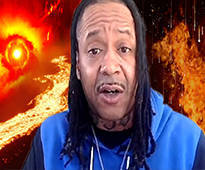
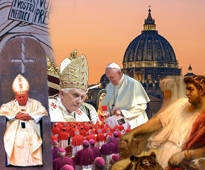
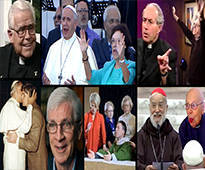
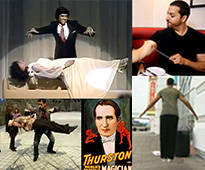
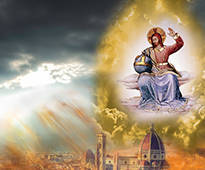

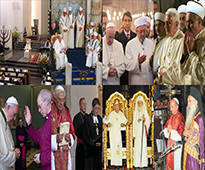


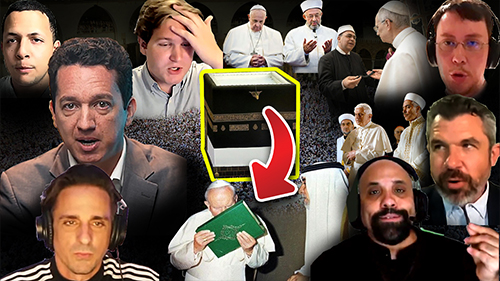 " />
" /> " />
" />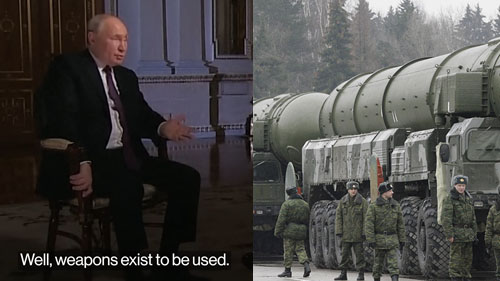 " />
" />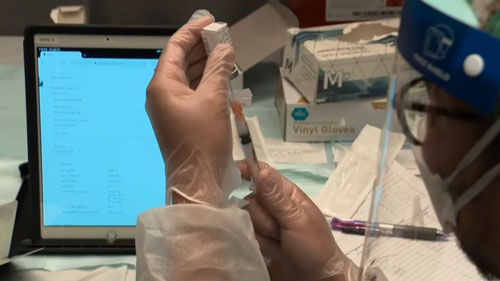 " />
" /> " />
" />




Answers to the Most Common Objections Against Sedevacantism
There are many objections launched against the sedevacantist position – that is, the position expounded in this book according to which the Chair of St. Peter is vacant because the post-Vatican II “popes” are not true popes, but non-Catholic antipopes. We will now address all of the major objections that are launched against this position.
Objection 1): The Gates of Hell cannot prevail against the Church, as Christ said (Matthew 16). He said He would be with His Church all days until the end of the world (Matthew 28). What you are saying is contrary to the promises of Christ.
Answer: No, indefectibility (the promise of Christ to always be with His Church, and that the gates of Hell will not prevail against it) means that the Church will, until the end of time, remain essentially what she is. The indefectibility of the Church requires that at least a remnant of the Church will exist until the end of the world, and that a true pope will never authoritatively teach error to the entire Church. It does not exclude antipopes posing as popes (as we’ve had numerous times in the past, even in Rome) or a counterfeit sect that reduces the adherents of the true Catholic Church to a remnant in the last days. This is precisely what is predicted to occur in the last days and what happened during the Arian crisis.
Objection 2): What’s your authority for making these judgments? Your use of dogmatic statements is private interpretation.
Answer: The authority a Catholic has to determine that heretics are not members of the Church is Catholic dogma, which teaches us that those who depart from the Faith are considered alien to the Church.
Objection 3): You cannot know if someone is a heretic or denounce him as such without a trial and declaratory sentence.
Answer: Not so. The declaratory sentence which follows an automatic excommunication is merely a legal recognition of something which already exists. If this were not true, the automatic excommunication would be meaningless.
Objection 4): What about material heresy? Can’t the Vatican II Popes only be material heretics?
Answer: A “material” heretic is a Catholic erring in good faith about a dogmatic issue. The Vatican II antipopes are without doubt real heretics. They cannot be material heretics (Catholics erring in good faith) for many reasons, most important among those reasons being: 1) they don’t hold the essential mysteries of Faith; 2) they reject obvious dogmas of which they are fully aware.
Objection 5): The Church cannot exist without a pope, or at least it cannot exist for 40 years without a pope, as sedevacantists say...
Answer: The Church has existed for years without a pope, and does so every time a pope dies. The Church has experienced a papal interregnum (i.e. period without a pope) over 200 different times in Church history. The longest papal interregnum (before the Vatican II apostasy) was between Pope St. Marcellinus (296-304) and Pope St. Marcellus (308-309). It lasted for more than three and a half years.[2] Further, theologians teach that the Church can exist for even decades without a pope.
Objection 6): Vatican I’s definitions on the perpetuity of the Papal Office contradict the claims of the sedevacantists.
Answer: Vatican I’s dogmas don’t contradict a vacancy of the Papal See; in fact, it’s only those who reject the Vatican II antipopes who can consistently accept these papal dogmas, since Benedict XVI utterly rejects them.
Objection 7): No one can judge the Holy See… thus the Vatican II popes are true popes.
Answer: First, people need to understand what the teaching “No one can judge the Holy See” means. It comes from the early Church. In the early Church, when a bishop was accused of a crime, there would sometimes be a trial presided over by other bishops or by a patriarch of greater authority. These bishops would sit in judgment on the accused bishop. The Bishop of Rome, however, since he is the supreme bishop in the Church, cannot be subjected to any trial by other bishops or by other people.
Objection 8): St. Robert Bellarmine said that one cannot depose a pope, but that one can licitly resist him. Sedevacantists judge, punish and depose the pope…
Answer: Many of those who believe Benedict XVI is the pope, yet reject the official actions of his “Church,” such as Vatican II, attempt to see a justification for their false position in this passage from St. Robert Bellarmine. In fact, this passage is one of the most commonly used pieces of evidence that people attempt to throw against the sedevacantist position. Unfortunately, the passage has been completely misapplied and distorted.
Objection 9): Pope Liberius gave in to the Arian heretics and excommunicated St. Athanasius, yet he remained the pope…
Answer: It is not true that Pope Liberius gave in to the Arians, signed any Arian formula, or even excommunicated St. Athanasius. Pope Liberius was a staunch defender of the truth during the Arian crisis, but his return from exile gave some the idea that he had compromised, when, in fact, he had not. We quote Pope Pius IX.
Objection 10): Pope Pius XII declared in Vacantis Apostolicae Sedis that a cardinal, no matter what excommunication he’s under, can be elected pope.
ANSWER: As we’ve already shown, it’s a dogma that 1) heretics are not members of the Church; and 2) that a pope is the head of the Church. It is a dogmatic fact, therefore, that a heretic cannot be the head of the Church, since he is not a member of it.
Objection 11): What does it matter whether or not Benedict XVI/Francis is a pope? The issue does not concern me.
Answer: If whether or not Benedict XVI is a pope does not matter, then the non-Catholicism of the Vatican II sect does not matter, the New Mass doesn’t matter, etc. One cannot separate one from the other. You cannot separate pope and Church. Furthermore, to maintain that Benedict XVI is the head of the Catholic Church is to assert that the gates of Hell have prevailed against Her.
Objection 12): How could the entire Church and all the cardinals recognize an antipope, such as in the case of John XXIII (1958-1963)?
Answer: Pope Paul IV declared that Catholics could not accept such a heretical claimant, even if obedience were given to him by "all" – indicating by such a statement that all giving obedience to such an antipope is a possibility.
Objection 13): John XXII was a heretic, who was even denounced by Cardinal Orsini as a heretic, yet he remained the pope.
Answer: John XXII was not a heretic, and his reign is no proof that heretics can be popes.
Objection 14): Pope Honorius was condemned for heresy by a general council after his death, yet the Church does not consider him to have ceased to be pope, even though he was accused of heresy during his reign.
Answer: As we have already seen, it’s a dogmatic fact that a heretic cannot be the pope, since it’s an infallibly defined dogma that a heretic is not a member of the Catholic Church.
Objection 15): The Church and the hierarchy will always be visible. If the Vatican II Church is not the true Catholic Church, then the Church and hierarchy are no longer visible.
Answer: 1) People misunderstand in what the visibility of the Church consists; 2) the Vatican II sect cannot be the visible Church of Christ; and 3) the Vatican II sect denies this very teaching on the visibility of the Church.
Objection 16): The Vatican II popes haven’t taught manifest heresy, because their statements are ambiguous and require commentary.
Answer: The one making this objection, Chris Ferrara, is completely wrong, as usual. First, there are many examples of manifest heresies from the post-conciliar antipopes which require no explanation or commentary, as we have seen. Second, papal authority teaches us that some heresies do require explanation, deep study and analysis to uncover and condemn, as we will also see.
Objection 17): Both the 1917 and 1983 Codes of Canon Law teach that a declaration is needed for one to lose his office due to heresy.
Answer: This is simply not true. Antipope John Paul II’s heretical and invalid 1983 Code states that such a declaration is necessary in Canon 194 § 3. But the 1917 Code doesn’t. The 1917 Code’s parallel canon to canon 194 is canon 188. Canon 188 of the 1917 Code does not contain this provision, but simply declares that a cleric who “Publicly defects from the Catholic faith” (188 § 4) loses his office by that very fact “without any declaration.”
Objection 18): The Council of Constance condemned the idea that a heretic would cease to be the pope.
Answer: No, the Council of Constance didn’t condemn the idea that a heretic would cease to be the pope at all. This is a serious misunderstanding of this proposition. As we see clearly above, the Council condemned something significantly different. It condemned the proposition that a wicked man would cease to be the head of the Church, since he is not a member of it. The proposition from the heretic Hus rightly asserts that one who is not a member of the Church cannot be the head of the Church, but it falls into trouble by stating that the pope ceases to be a member if he is “wicked.”
Objection 19): The Joint Declaration with the Lutherans is not manifest heresy because John Paul II and Benedict XVI didn’t sign it.
Answer: The Joint Declaration with the Lutherans by itself proves that the Vatican II “popes” are non-Catholic antipopes. The fact that John Paul II and Benedict XVI neither wrote the document nor signed it is completely irrelevant. They both approved of it publicly numerous times, and agreed with it.
There is No Reason not to accept the Sedevacantist Position
We have addressed in much detail the major objections launched against the sedevacantist position. We can see that there is nothing in the teaching of the Catholic Church which should cause one not to accept the undeniable fact that the Vatican II sect is not the Catholic Church, and that the men who have headed this sect (the post-Vatican II “popes”) are not popes at all, but non-Catholic antipopes. On the contrary, there is undeniable proof for this position and every reason to accept it.
[1] Decrees of the Ecumenical Councils, Sheed & Ward and Georgetown University Press, 1990, Vol. 1, p. 113.
[2] Denzinger 51-52e; Warren H. Carroll, A History of Christendom, Vol. 1 (The Founding of Christendom), p. 494; J.N.D. Kelly, Oxford Dictionary of Popes, Oxford University Press, 2005, p. 25.
Sign up for our free e-mail list to see future vaticancatholic.com videos and articles.
Recent Content
^